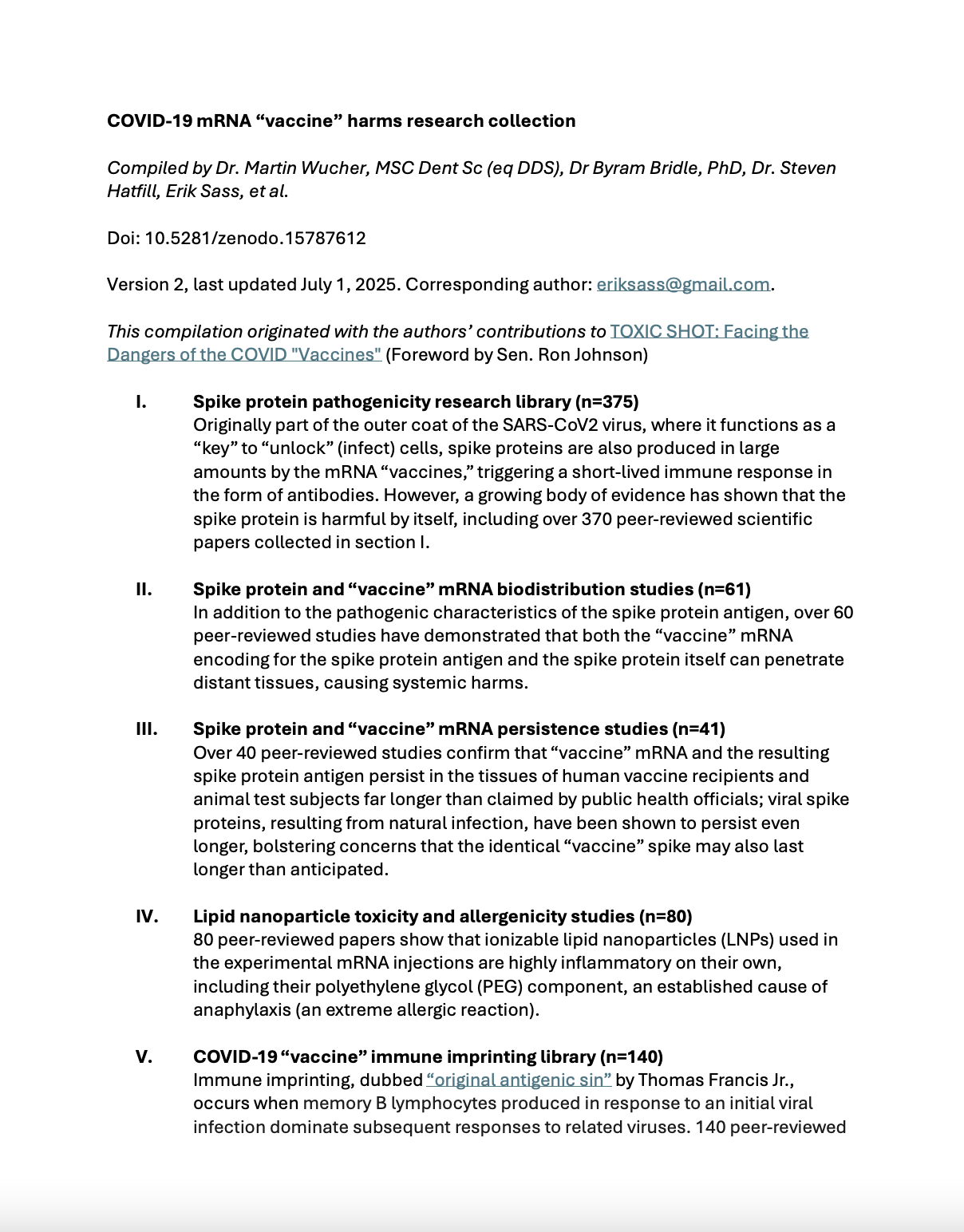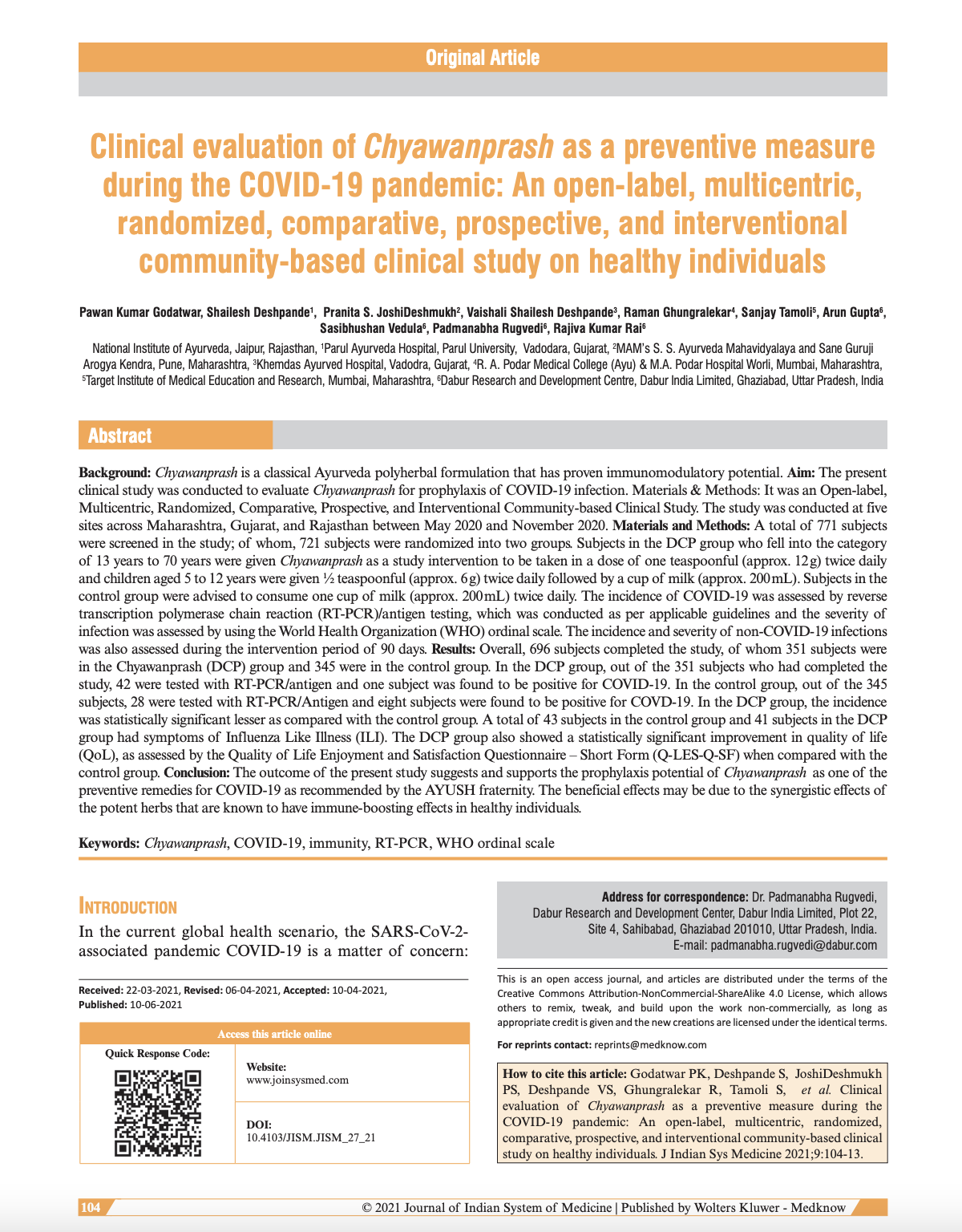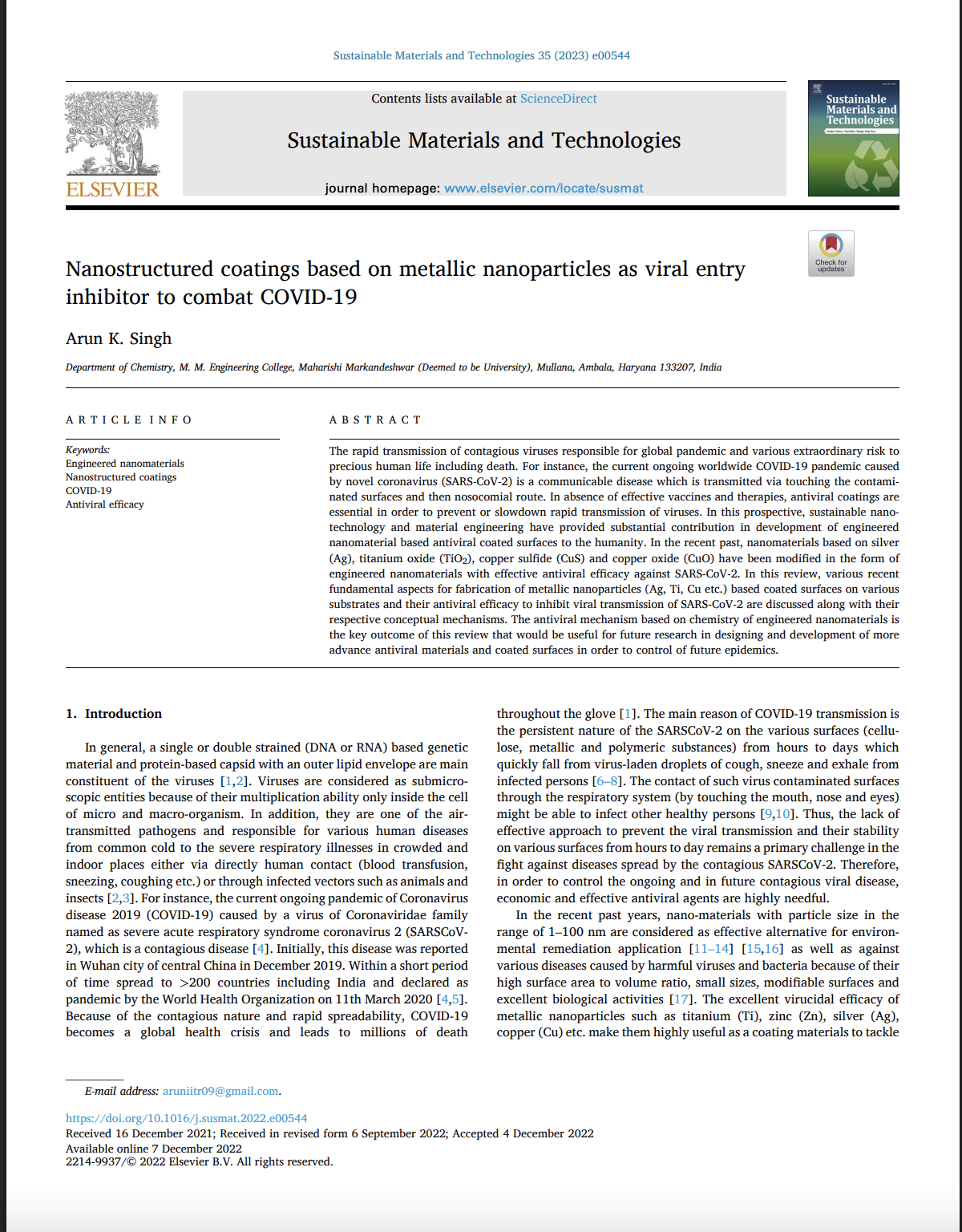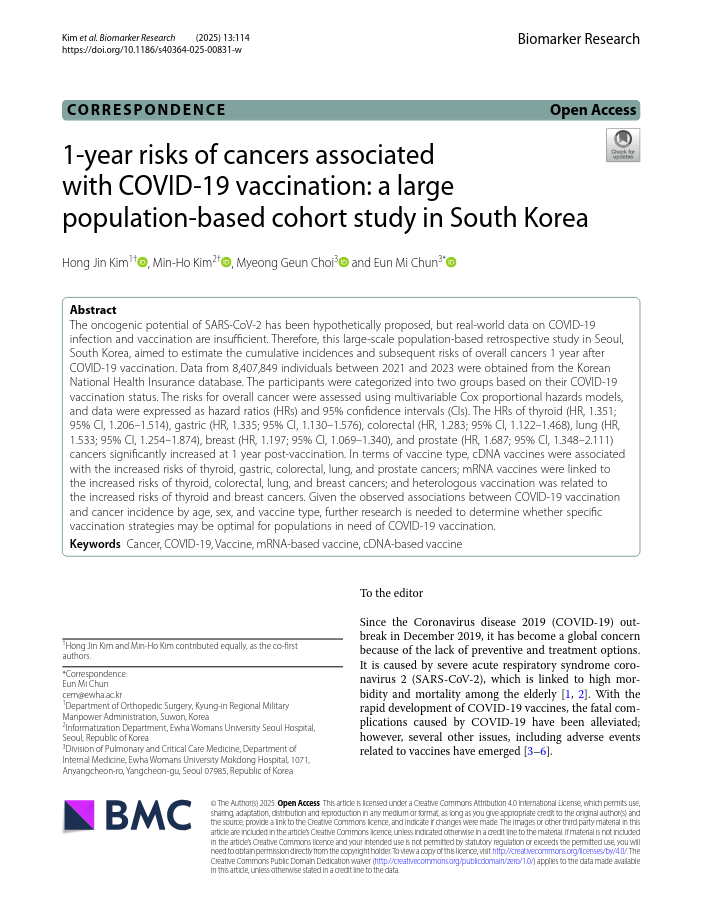Sarstat: Research papers collection:
These are a collection of research papers presented for consolidated convenience on COVID-19 era concerns and remedies.

COVID-19 mRNA “vaccine” harms research collection
Compiled by Dr. Martin Wucher, MSC Dent Sc (eq DDS), Dr Byram Bridle, PhD, Dr. Steven Hatfill, Erik Sass, et al. Doi: 10.5281/zenodo.15787612 Version 2, last updated July 1, 2025. Corresponding author: eriksass@gmail.com. This compilation originated with the authors’ contributions to TOXIC SHOT: Facing the Dangers of the COVID "Vaccines" (Foreword by Sen. Ron Johnson)
View PDF
Clinical evaluation of Chyawanprash as a preventive measure during the COVID-19 pandemic
An open-label, multicentric, randomized, comparative, prospective, and interventional community-based clinical study on healthy individuals. Journal of Indian System of Medicine 9(2):p 104-113, Apr–Jun 2021. | DOI: 10.4103/jism.jism_27_21
View PDF
Nanostructured coatings based on metallic nanoparticles as viral entry inhibitor to combat COVID-19
By Arun K. Singh, Department of Chemistry, M. M. Engineering College, Maharishi Markandeshwar (Deemed to be University), Mullana, Ambala, Haryana 133207, India. SARSCoV-2 resistance and inactivation efficacy of metallic nanoparticles. Modes of antiviral mechanism includes direct disinfection, indirect disinfection and receptor inactivation to effectively disable SARSCoV-2 The anti-viral efficacy of copper nanoparticles integrated/coated surfaces against SARSCoV-2.
View PDF
1-Year Risks of Cancers Associated with COVID-19 Vaccination
This retrospective cohort study, published in Biomarker Research (2025), investigates the one-year cancer risks associated with COVID-19 vaccination using South Korea’s National Health Insurance database, analyzing 8,407,849 vaccinated individuals from 2021–2023. Through propensity score matching and Cox proportional hazards models, the study identifies elevated risks for six cancers post-vaccination—thyroid (HR 1.351), gastric (HR 1.335), colorectal (HR 1.283), lung (HR 1.533), breast (HR 1.197), and prostate (HR 1.687)—with variations by vaccine type (mRNA, cDNA, or heterologous), sex, and age. Notably, mRNA vaccines were linked to thyroid, colorectal, lung, and breast cancers, while boosters increased gastric and pancreatic risks. Although causality is not established, the findings suggest potential vaccine-related oncogenic pathways, urging further mechanistic studies and highlighting the need for biomarker-driven surveillance to inform public health strategies.
View PDF